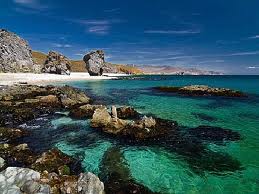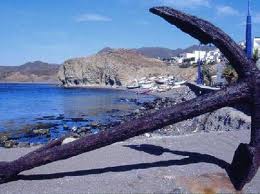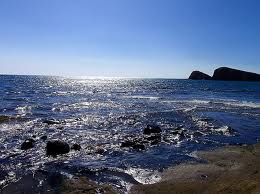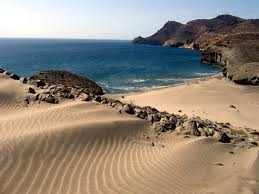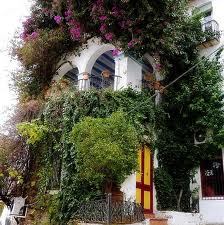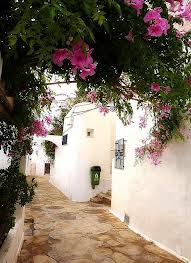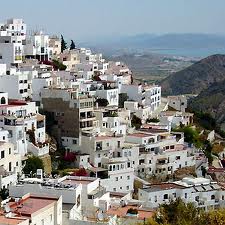MOJACAR PUEBLO, INDALO MAN, MOORS & CHRISTIANS IN ANDALUSIA
Mojacar Pueblo
Almeria is one of the eight provinces of Andalusia and is situated in its most northwesterly corner. The great historical narrative of Andalusia and southern Spain tells the story of the Arabic Renaissance during the Middle Ages when gradual conquest pushing northwards up through Christian Europe threatened to create a very different version of the history we know before it was eventually rebuffed and repelled by the crusades and Christian cultures of northern and central European civilisations. This story is famously written into the architecture and histories of the Andalusian region from the grandest fort and cathedral to the smallest church. Echoes of the Moorish past are all around us and Mojacar Old Town is no exception.
For a brief history of the old town, visit the informative website www.mojacar.co.ukclick on About Mojacar on the Menu SideBar and then select History from the options.
Made for TV version is as follows; Mojacar before the Christian Era, like much of the Mediterranean basin, was settled by Phoenicians and then the ancient Greeks, who called this lofty mountain top promontory Murgis Akra - Loft City. As ancient Greece yielded to the Roman Empire, the Latin equivalent became Musacra. The Moors drove out the early Middle Ages Christians and renamed it Moxacar. Upon re-taking the region some five hundred years later, the Romance languages influence of France, Spain and Italy resulted in.... Mojacar
As the account in the above-mentioned website describes, in the year 907, Moxacar was under the control of the Moorish Caliphate of Cordoba; internal regional re-alignments followed over the centuries with sporadic attempts on the part of the Christians to regain influence, until the town gradually yielded to Christian reconquest. Unusually, history records a story of assimilation not bloody insurrection, as the Moors, ostensibly at least, converted to Christianity, in order to keep their land and property. Tradition has it, that the key negotiation took place in 1488 at the Fuente de los Doce Anos, The Village Fountain, which survives to this day.
A symbolic site, the fountain has, for thousands of years, provided a supply of fresh water to the town, enabling its Moorish forebears to withstand attack while under siege and providing fresh drinking water to its Spanish inhabitants to this day.
Another interesting architectural feature in the town is the Church of Santa Maria, built in 1560. It was quite deliberately built to double as a place of worship but also as a fortification, a place of refuge from the threat of pirates and Turkish corsairs. Have a drink in the plaza in front of the church at Bar Candilejas. Its centrepiece, The statue La Mujer Mohaquera, a woman carrying a jug of water bears witness to the importance of the fresh water in the story of this town.
The town is charming as a place for sightseeing; the labyrinth of cobbled streets, whitewashed cottages, trees and bougainvillea, some great vantage points for surveying the coastal landscape below and plenty of restaurants and cafes. It's a haven for artists who appreciate the quality of the light and there is a pageant festival in June each year which retells the history of the Moors and Christians in this town.
Indalo Man
The symbol of the man carrying the canopy of the heavens or a rainbow has its origin in the ancient NeoLithic painting found in the caves of Letreros in Velez Blanco. It is a superstitious totem to give luck and ward off evil spirits. The word itself is an hybrid Latinisation of Al-Andalus, the Arabic word which gave its name to the region of Andalusia. The Indalo is also known as the Muneco Mojaquero, the Mojacar doll.
The etymology of the word Andalucia or Andalusia again can be found in its Arabic equivalent Vandalusia - the land of the Vandals and Visigoths, northern tribes which ransacked the lands of the Roman Empire. Everyone seems to have had a tilt at this part of the world, except the British, until I read that the British navy made a few half-hearted forays into this part of the world at the time of Elizabeth I and the Spanish Armada !
Finally, you wont be surprised to learn that the word for this province, Almeria has Arabic origins Al-Mira, mirror of the sea.
Moors and Christians in Andalusia
If you really want to explore the Arabic backstory to this region which gave the world bullfights and flamenco, you need to visit the troika of cities which formed the mainstay of the Arabic Renaissance, Granada, Seville and Cordoba, with their world heritage site monuments of the Alhambra Palace, Seville Cathedral and La Mesquita, the Great Mosque of Cordoba.
However a mini-trip is possible from Mojacar, because the City of Granada is drivable from Mojacar and there are also excursions which you can book for visiting the Alhambra Palace and Gardens. Get up to date information from the Tourist Information booth as described in Useful Information
Finally, the City of Almeria itself has some impressive cultural attractions. The Alcazaba fort, the greatest Muslim fort of all Spain and Europe, and the Cathedral Fortress of Almeria, which has impressive decorative and architectural features encompassing the whole gamut of Western architecture, from Gothic and Renaissance through to Baroque and NeoClassical. Drivable as a day trip.




